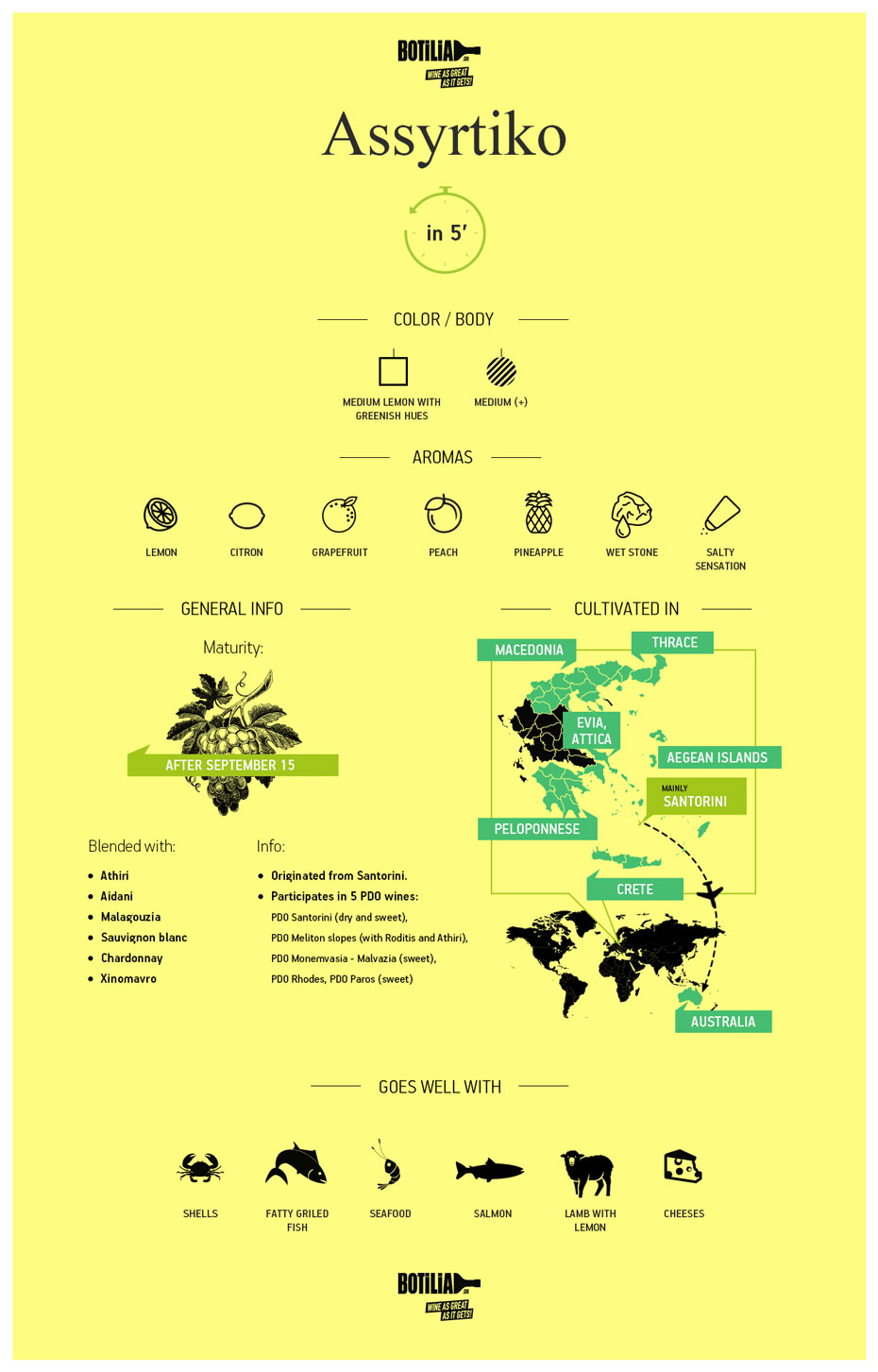ASSYRTIKO IN 5' !

General info
Assyrtiko is one of the most important grape varieties, not only of Greece but also of the Mediterranean! It is a very resistant variety in both drought and disease. It is cultivated with very interesting results all over Greece, giving wines of different styles.
When it’s vinified solo, it can give still, dry, white wines, with or without oak aging , with good aging potential, but also sparkling white wines and even retsina. When it’s blended with other varieties it can give, white, still and sparkling wines, sweet wines such as the famous Vinsanto or even rosé wines like Fine Rose of Anatolikos Vineyard!
History
Its origin is from the island of Santorini and it carries its "imprint" with the aromas of salt and gunpowder and its minerality that characterize the wines from Assyrtiko. During the pandemic of phylloxera that struck Europe, Santorini and its Assyrtiko managed to survive because of its particular soil and dry climate. Thus, in Santorini there are autochthonous vineyards with old vines (some over 100 years old), which have attracted the interest of the wine world globally. Specifically, a few years ago, a well-known producer, Jim Barry from Australia was so impressed by Assyrtiko of Santorini that decided to take vines to his homeland. Since 2016 Assyrtiko has crossed the borders.
Characteristics
Assyrtiko makes wines with high acidity, medium to full body and medium lemon-green color. When it comes from Santorini, it’s pretty dense, with high acidity and characteristic aromas of gunpowder, flintstone and also a salty - mineral sensation. It usually has citrus flavors such as lemon and grapefruit but also notes of unripe peach or pineapple. From the oak aging or the lees contact, it acquires an oily feeling and the characteristic aromas of toast, vanilla, tobacco and dough, respectively. From the aging, its mineral character is emphasized and it acquires notes of petrol, honey and jam of peach and orange that reminisce of a 5-year riesling.
The Assyrtiko-based dessert wines are characterized by the condensation and the balance given by the high acidity, but also by the intensity of the flavors. They are wines of unique elegance, as the acidity "tames" the sweetness and so a sip is never enough!
Combination with food
The acidity and sea feeling of Assyrtiko is perfectly married with shells, seafood and fish, especially if you drip a little lemon on them. On the other hand, ideal meaty combinations are roasted lamb or goat, since the fatty character of the dish demands the refreshing acidity of Assyrtiko. The same goes for fatty saganaki cheese, of course!
If you choose an oaked version, then a smoked pork shank with orange sauce will take off the flavors and aromas of the wine. If you prefer more gourmet recipes, a guinea fowl with dried apricots and chestnuts will go well with your wine, especially if you have forgotten it for 3-4 years in your cellar.
When it comes to Assyrtiko – based dessert wines the combinations are endless: orangepie, kunefe, mont blanc, chocolate pie, chocolate soufflé with salty caramel sauce, galaktoboureko, baklava, chocolate cremeux with hazelnuts, baba au rum with raisins and foie gras, gorgonzola picante, fior d’ Arancio cheese, kariki cheese of Tinos, Kopanisti cheese from Mykonos and many more ... leave your imagination and appetite free!
We could go on for hours, but we said in 5 '!
Eva Markaki
Wine Geek


